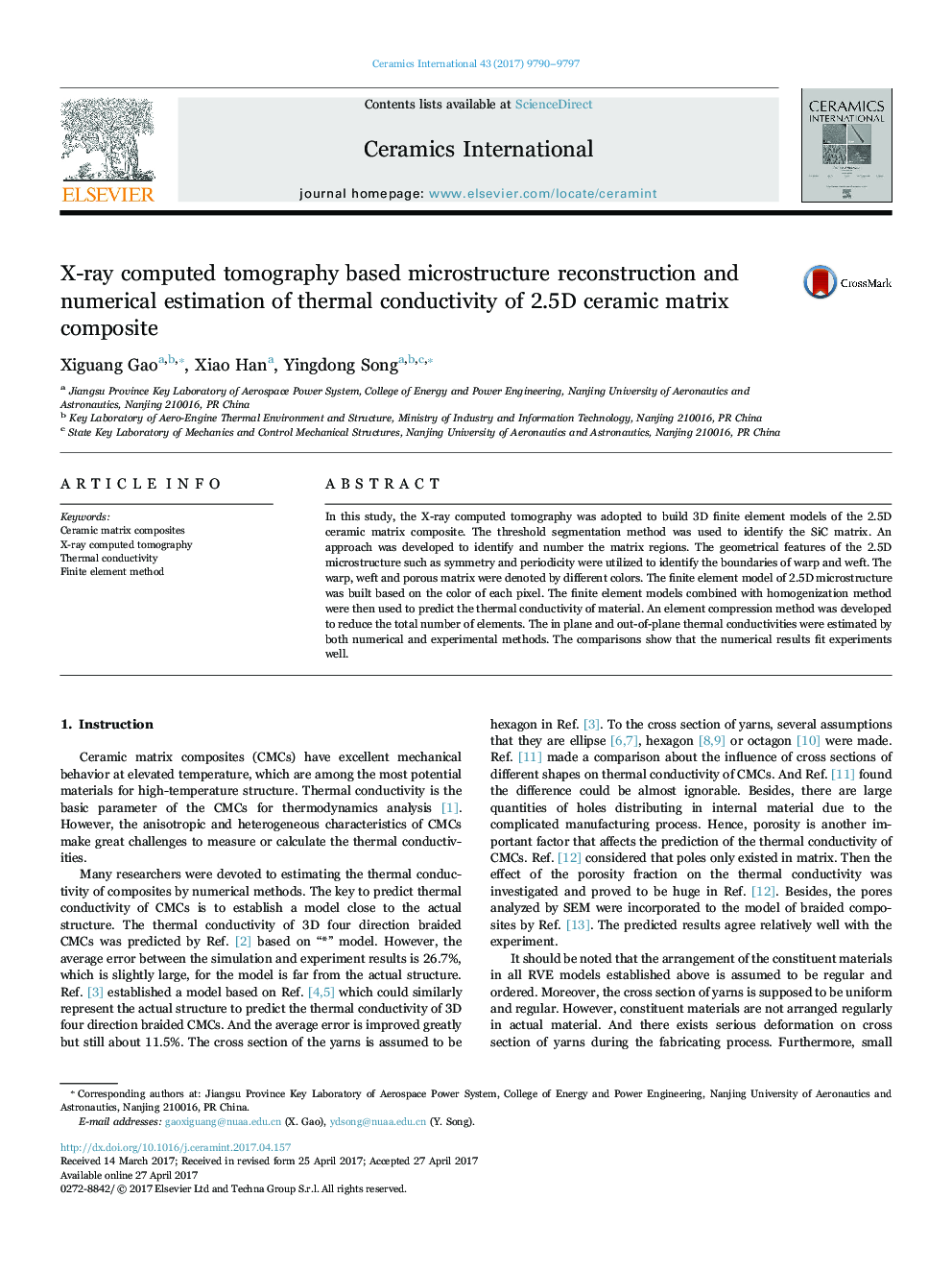| Article ID | Journal | Published Year | Pages | File Type |
|---|---|---|---|---|
| 5437632 | Ceramics International | 2017 | 8 Pages |
In this study, the X-ray computed tomography was adopted to build 3D finite element models of the 2.5D ceramic matrix composite. The threshold segmentation method was used to identify the SiC matrix. An approach was developed to identify and number the matrix regions. The geometrical features of the 2.5D microstructure such as symmetry and periodicity were utilized to identify the boundaries of warp and weft. The warp, weft and porous matrix were denoted by different colors. The finite element model of 2.5D microstructure was built based on the color of each pixel. The finite element models combined with homogenization method were then used to predict the thermal conductivity of material. An element compression method was developed to reduce the total number of elements. The in plane and out-of-plane thermal conductivities were estimated by both numerical and experimental methods. The comparisons show that the numerical results fit experiments well.
